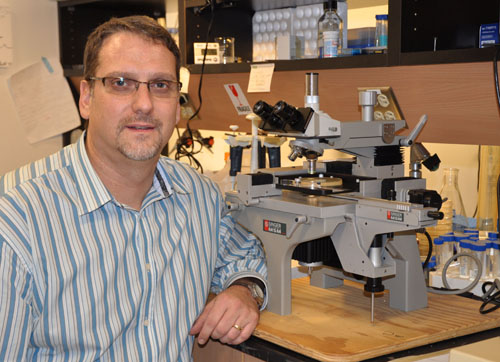
It’s not easy being yeast. The single-celled organism known as Sacchromyces cerevisiae endures a hostile environment while producing alcohol in wine during the fermentation process. Before a bottle of wine makes it to your dinner table, wine makers add yeast to crushed grape juice to produce flavour compounds and convert the sugar into ethanol.
“There are many things in the grape juice that are very stressful for the yeast,” says Prof. George van der Merwe, Department of Molecular and Cellular Biology, who studies how yeast responds to its environment.
The aggressors include high levels of solutes from plant material as well as high acidity. As the yeast feeds on the sugar, it produces a higher concentration of ethanol, which eventually reaches toxic levels for the yeast.
“All of these things combined make for a very unfriendly environment for these yeast to perform their duty,” says van der Merwe. “We want to identify specific genes and proteins that help the yeast combat these stresses.”
To do this, researchers are creating mutant yeast by disabling one of the 6,000 genes in the yeast genome. The mutant yeast cells are then screened for those that are more sensitive or more resistant to certain stressors, thus identifying the genes that are involved in the stress response. Van der Merwe is studying 13 of those genes.
Although the mutant yeast cells are not currently being used in wine production, the ultimate goal of the research is to develop a more stress tolerant strain of yeast and improve the fermentation process without detracting from the colour, taste and quality of the wine. There are 200 different strains of wine yeast, each of which is specific to red, white or sparkling wine.
So the next time you enjoy a glass of wine, think of the yeast that made it.